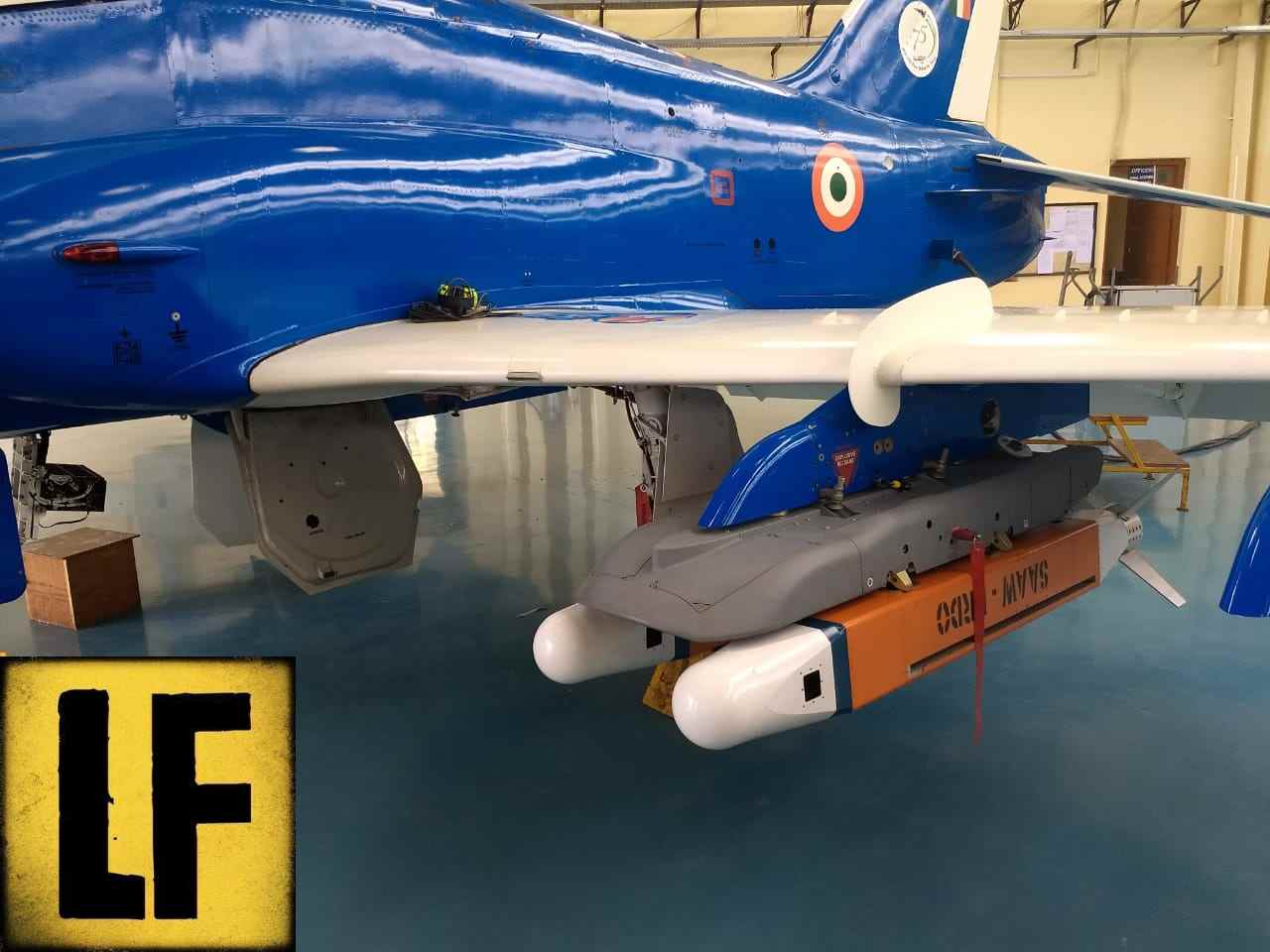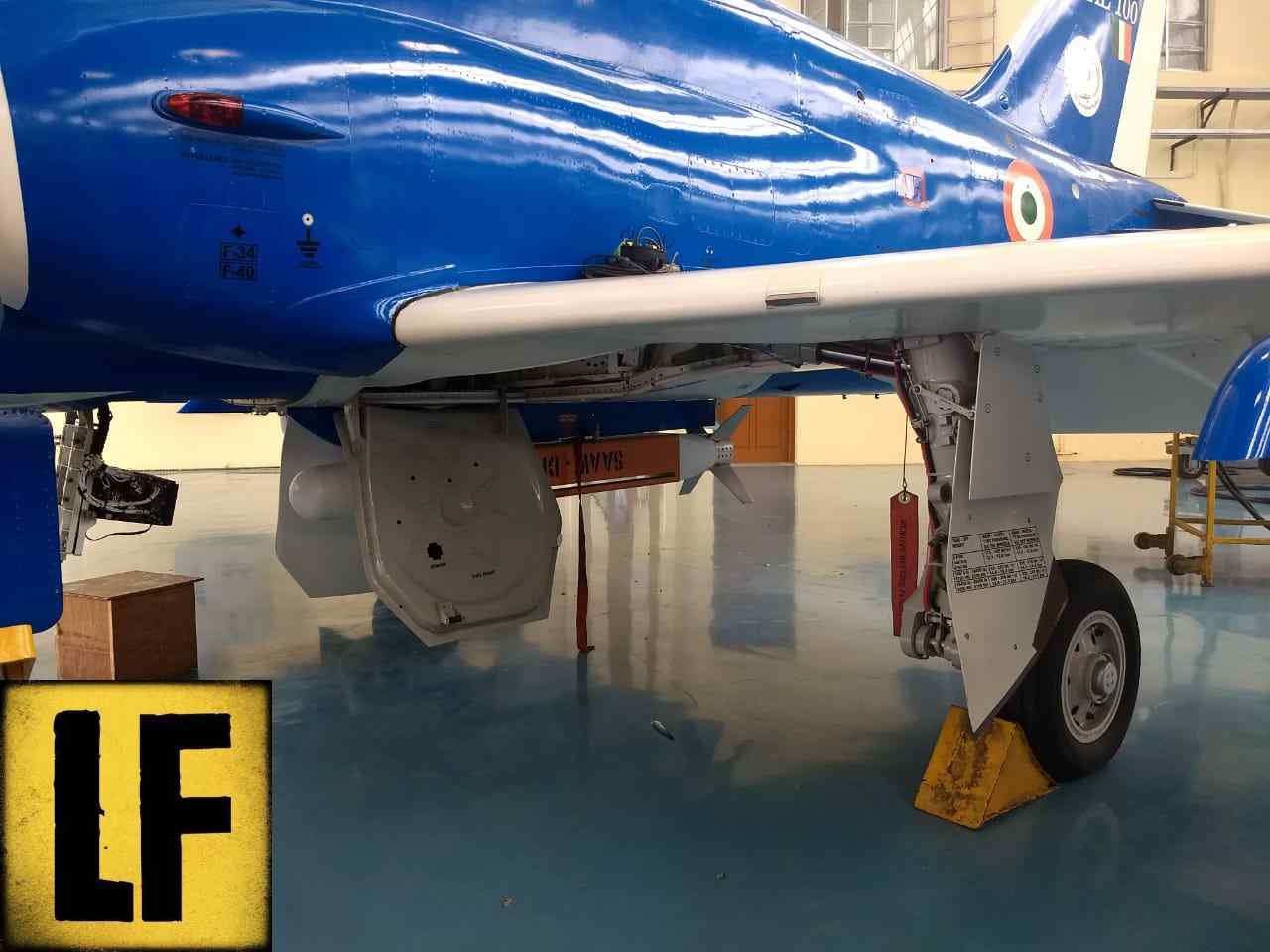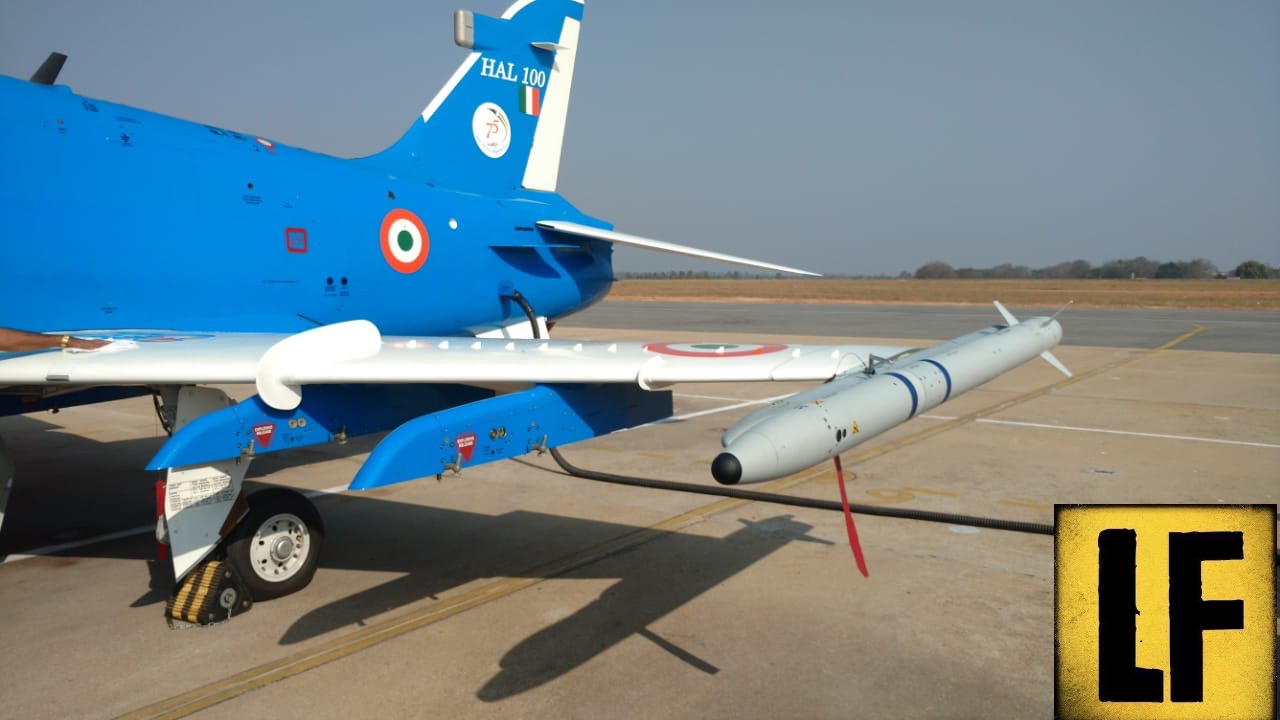
In April over the Bay of Bengal, a stubby orange box-shaped weapon will separate from an aircraft flying at 20,000 feet, flip open a pair of angular wings from its sides, and glide over the sea towards a pre-designated spot 80 km away at sea. The weapon, called SAAW — short for Smart Anti-Airfield Weapon — is an in-the-works Indian munition designed to destroy runways at stand-off distances. The aircraft dropping the weapon will be a Hawk-i, on its first ever weapons run. The weapon will be in ‘fire and forget’ mode with inertial guidance.
With over 100 British-origin BAE Systems Hawk Mk.132 jet trainers in service with the Indian Air Force and Indian Navy, the Hawk-i is an internally funded program by Hindustan Aeronautics Ltd (HAL, which has license built most of the Hawks in Bengaluru) to offer the military an upgrade and weaponisation solution for the Hawk, transforming it from a trainer of budding fighter pilots in peacetime into a jet that can be deployed on certain combat missions during conflict. The program is in the process of weaponising the Hawk-i with bombs, air-to-air missiles and stand-off strike weapons like the DRDO’s SAAW that will be test-fired this summer. The SAAW, incidentally, is on display for the first time at the ongoing Aero India show in Bengaluru.
Well into test, the 100-km range @DRDO_India Smart Anti-Airfield Weapon on display at #AeroIndia2019 this year. pic.twitter.com/94L0ml104e
— Livefist (@livefist) February 22, 2019
The Hawk-i program began in 2014 and is centered around replacing the baseline Hawk’s British mission computer with an Indian one, allowing its developers the flexibility to sling on weapons of choice and give the aircraft the ‘brains’ it needs to generate weapon solutions and fire those weapons. In the absence of a primary radar, to give pilots of the Hawk-i a point and shoot capability, they fly with Israeli Elbit Dash V helmets. Livefist learns that weapon algorithms from the DARIN II and III upgrades effected on the IAF’s Jaguar fleet have been used in the Hawk-i’s mission computer that also uses a HAL-developed real time operating system (RTOS).
The idea is that when the IAF’s Hawks receive the Hawk-i upgrade, they’ll be able to join the battle if a war breaks out, and not have to sit on the ground. Since their straight wings don’t permit fighter-type speed to get away from a sticky situation, the Hawk-i is being kitted out for light strike missions at stand-off distances, including interdiction and close air support. But Hawks turn and climb very nimbly, therefore making their weaponised avatar suitable for operations close to the border or Line of Control for ‘hit and run’ missions. The SAAW test from the Kalaikunda air base in April will be the first of many flights to prove the Hawk for small offensive missions as a smart bomber.
Other weapons options on the Hawk-i will include high speed low drag bombs, sensor fused weapons (like the Textron CBU-105 operational now on IAF Jaguars) and laser guided bombs. Apart from the Litening laser designation pod, the platform will also be able to deploy an electro-optical tactical reconnaissance pod or an active phased array self protection jammer pod. The upgraded aircraft already gone ahead and integrated a CMDS (Counter Measure Dispensing System) and is shortly integrating a radar warning receiver (RWR).
Other add-ons in the Hawk-i program include a virtual training simulator and a 3D digital map generator to keep new generations of pilots abreast with the latest flying aids.

While the Indian Air Force is yet to contract for the Hawk-i program, HAL is pressing on with proving the Hawk-i’s qualities convinced that an upgrade down the line is inevitable — and the fact that it is a fully Indian effort will be impossible to ignore. The way the Hawk-i program works is also entirely new for HAL, a state-owned firm that has almost overwhelmingly worked in response to firm orders or irreversible interest from its military customers. The rationale is that when the IAF is finally ready to pull the trigger on the upgrade, HAL will have everything ready to go with no delays and minimum risk.
The IAF has wanted to give its Hawks teeth for a while now. Livefist reported in 2017 that the IAF showed interest in integrating the MBDA Brimstone strike weapon and ASRAAM heat-seeking missile onto its Hawks. Earlier that year, right after the Aero India 2017 show, HAL’s newly unveiled Hawk-i was integrated with ASRAAM missiles on its wingtips — a crucial piece of weaponry that will allow the Hawk to conduct strike missions while also having the ability to defend itself against other aircraft. Livefist recently reported on the IAF’s plans to standardise the ASRAAM across other combat aircraft types in its fleet.

The Hawk-i was first unveiled just around the time that HAL and BAE Systems announced the Advanced Hawk, a platform revealed first here on Livefist in 2017. While both platforms seek to take the Hawk’s capabilities to the realm of offensive missions, the latter gives the Hawk better flying qualities with jointly designed mechanical changes to its wings, more thrust from its engine and a more modern cockpit. While the Advanced Hawk is being pitched as an additional procurement to take on fighter-like training (with weapons, if necessary), the Hawk-i is an upgrade package that specifically involves a new Indian nervous system that permits electronic warfare and weapons flexibility.
In a separate development at the ongoing Aero India show, HAL also announced that it was proposing a supersonic trainer based on the LCA Tejas airframe, as a possible bridge between the Hawk and fast jets.

Very good article Shiv. This is an option that I hope the IAF will exercise. Should impart a lot of flexibility to use Hawks as a second line of light strikers. While being sub-sonic platforms, they have inherent disadvantages against an enemy that has capable fighters that can intercept them, if escorted by Su-30MKI, Rafale or any of the IAF’s other fighters, they could prove to be useful.
The SAAW standoff PGM should hopefully spawn a family of glide bombs of varying sizes and warhead weights. Get a 250 kg, 500 kg and even 1000 kg glide bomb with a precision INS/GPS guided seeker. the IAF needs hundreds if not thousands of these types of PGMs stocked up for the next possible air war. Stand-off capability is a must against capable Air Defence systems.
Hope HAL shows similar urgency in integrating Astra and SAAW to Tejas.
pure waste of money, instead order more LCA MK1A